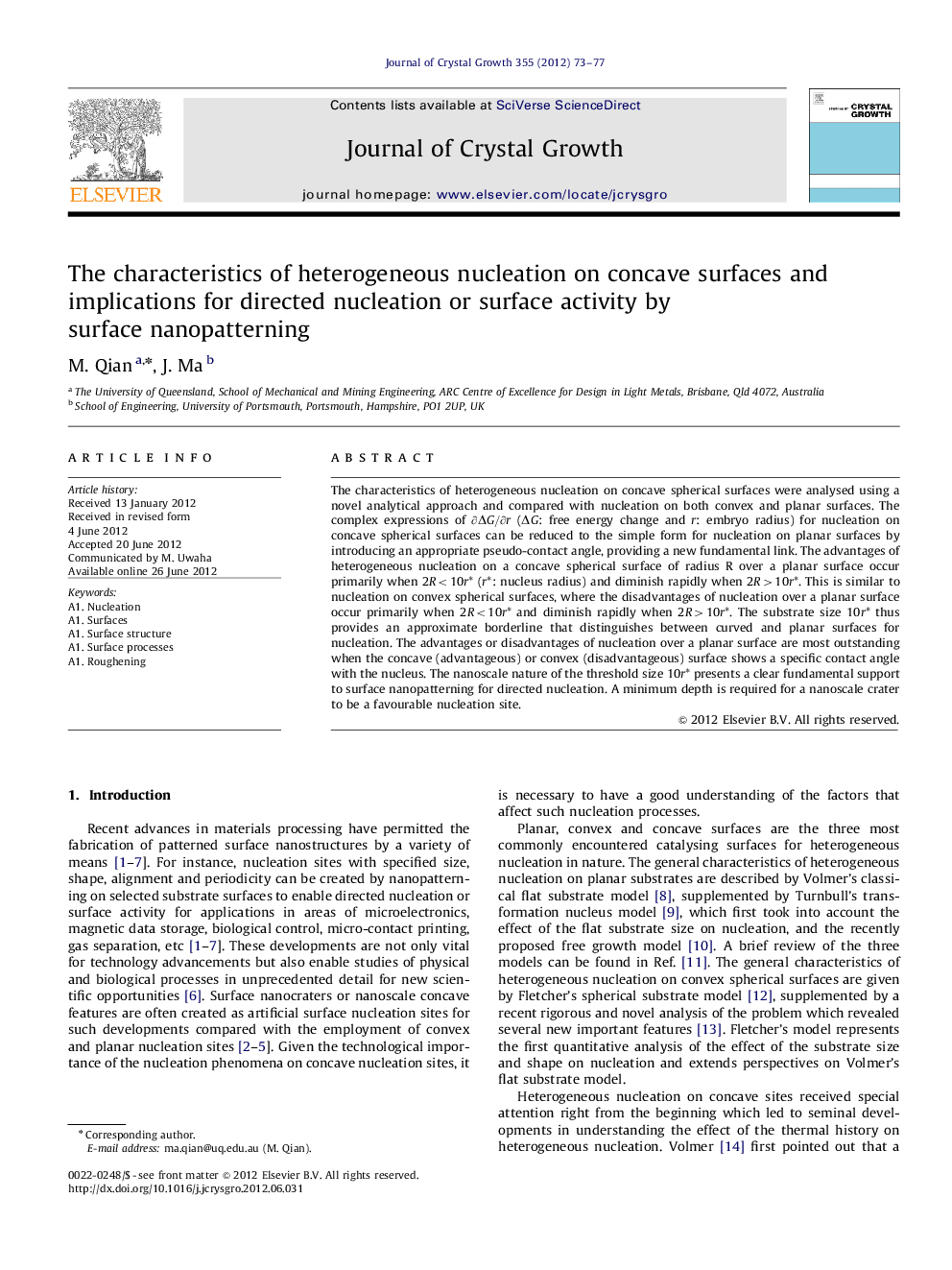| کد مقاله | کد نشریه | سال انتشار | مقاله انگلیسی | نسخه تمام متن |
|---|---|---|---|---|
| 1791698 | 1023617 | 2012 | 5 صفحه PDF | دانلود رایگان |

The characteristics of heterogeneous nucleation on concave spherical surfaces were analysed using a novel analytical approach and compared with nucleation on both convex and planar surfaces. The complex expressions of ∂ΔG/∂r∂ΔG/∂r (ΔGΔG: free energy change and r: embryo radius) for nucleation on concave spherical surfaces can be reduced to the simple form for nucleation on planar surfaces by introducing an appropriate pseudo-contact angle, providing a new fundamental link. The advantages of heterogeneous nucleation on a concave spherical surface of radius R over a planar surface occur primarily when 2R<10r⁎ (r*: nucleus radius) and diminish rapidly when 2R>10r*. This is similar to nucleation on convex spherical surfaces, where the disadvantages of nucleation over a planar surface occur primarily when 2R<10r* and diminish rapidly when 2R>10r*. The substrate size 10r* thus provides an approximate borderline that distinguishes between curved and planar surfaces for nucleation. The advantages or disadvantages of nucleation over a planar surface are most outstanding when the concave (advantageous) or convex (disadvantageous) surface shows a specific contact angle with the nucleus. The nanoscale nature of the threshold size 10r* presents a clear fundamental support to surface nanopatterning for directed nucleation. A minimum depth is required for a nanoscale crater to be a favourable nucleation site.
► We report a new fundamental link for nucleation on concave, convex and flat surfaces.
► The advantages of nucleation on concave surfaces of radius R occur primarily when 2R<10r⁎.
► The threshold 10r⁎ provides a clear fundamental support to surface nanopatterning.
► Craters with 2R<10r⁎ and a minimum depth are most desired for nucleation.
Journal: Journal of Crystal Growth - Volume 355, Issue 1, 15 September 2012, Pages 73–77